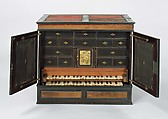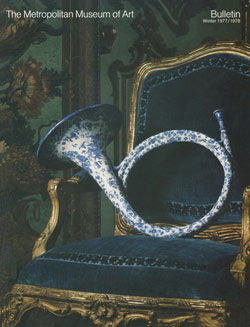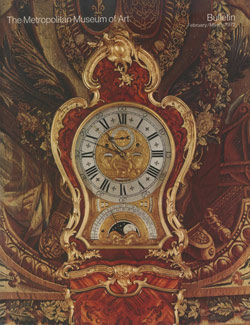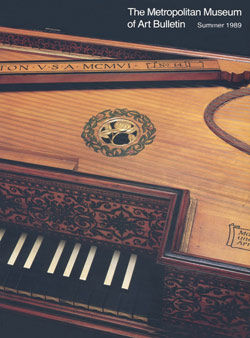Claviorganum
Lorenz Hauslaib German
Organ mechanism made by Steffan Cuntz German
Not on view
This tiny instrument incorporates an organ and a virginal built into an ebony tabletop chest of drawers. The lower keyboard manual is for the organ, and levers at the left of the keyboard serve as stops. A pair of bellows is concealed beneath the top of the chest; two ranks of flue pipes and a regal (reed) stop are arranged behind the drawers in the back. The upper keyboard belongs to a removable octave virginal. The instrument is tuned to approximately A=445. Above the keyboards is a small door with a lock and two carved columns flanking a brass relief panel depicting the Deposition from the Cross. The instrument was constructed by Laurentium Hauslaib during the time that he served at the court of Frederick IV, elector of the Palatinate, and was probably intended for domestic use.
Technical description: Two manual keyboard instrument, upper manual is an octave virginal, lower manual is an organ; the virginal is removable from the cabinet of the organ, corner of case is angled, case of unidentified light brown wood; compass c/e-a#; bone naturals with fronts of wood and parchment cut into a trefoil design, accidentals of black-stained hardwood covered with ebony plates, two-rail keyframe with padded overhead dip rail, keys guided by metal pins in rack; jacks are pear with bristle springs, quill plectra, slots for single dampers (none present), and small lead weights, jacks guided by punched leather strips glued to soundboard and separate lower guide, two jacks share a single slot, with no divider between them; the soundboard is decorated with a pierced wood and parchment rose, painted borders, flowers, and berries.
Due to rights restrictions, this image cannot be enlarged, viewed at full screen, or downloaded.





